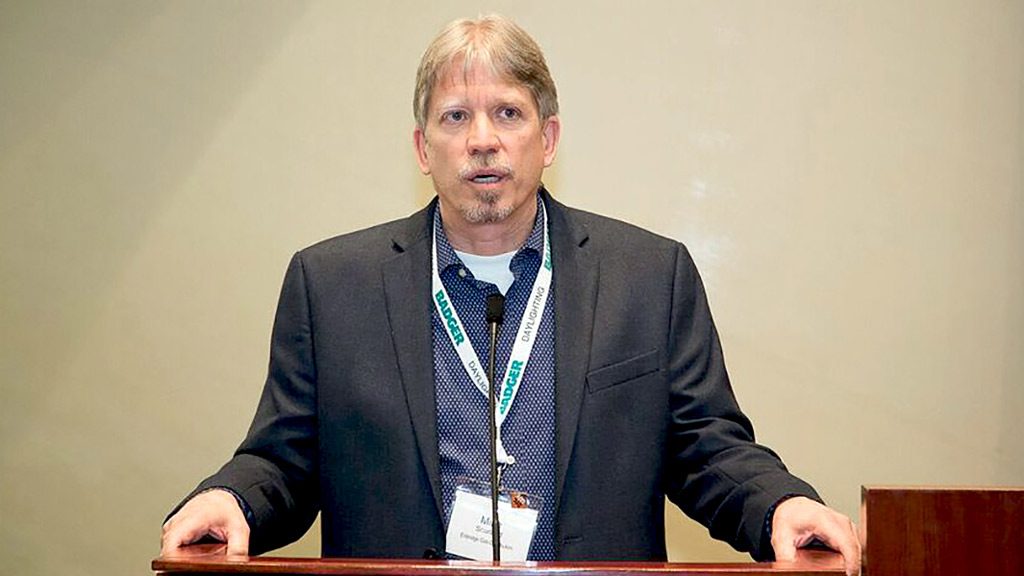Mike Scarland will always regret not stopping to ask if crews performing road and sidewalk excavation work on Bloor Street West near Kipling Avenue in Etobicoke, Ont. had proper locates.
“Because of my role at the Technical Standards and Safety Authority, I did look around for paint on the ground but I never really stopped to think about the people that were doing the work because it was a very well known excavation company,” recalled Scarland, who is now the manager of emergency response at Enbridge Gas Distribution, of the incident that occurred on April 24, 2003. “They were working for one of the best city’s in the world and so you’re thinking I’m sure they’re following all the practices they have to follow. That decision to not stop has always haunted me.”
Media reports indicate Precision, who was contracted by Enbridge to identify the natural gas pipelines in the construction area, failed to locate a line leading into a nearby plaza. The line was struck and damaged by a backhoe causing gas to leak into the building, Scarland explained.
The explosion destroyed a two-storey mixed commercial and residential building killing seven people, injuring four and damaging nearby buildings. Enbridge, Precision and Warren Bitulithic Ltd. construction company were fined for regulatory violations related to the explosion in 2011.
Scarland shared this “safety moment” at the Dig Safe: Construction Safety in the GTA event hosted by the City of Toronto in partnership with the Ontario Regional Common Ground Alliance at City Hall April 13.
The event was an opportunity for the city and excavating community to come together to develop ways to address a number of issues including damages, direct costs including damage repairs and restoration services, indirect societal costs including injury or death, traffic disruption, the diversion of emergency services, environmental and economic impacts as well as maintaining the integrity of essential services including municipal and utility infrastructure. The event was also geared towards protecting communities from threats to health and security through information sharing.
April is Dig Safe Month, Scarland told the crowd gathered for the event. He asked how many people in the room would stop if they saw someone digging on a project to ask if they have proper locates if they didn’t see any paint marking the underground utilities. Many did not raise their hands.
“I appreciate your honesty,” Scarland stated.
“You almost think in a room like this you would have 100 per cent of people putting up their hands. I get it, it’s kind of tense, you don’t want that confrontation especially if it’s a neighbour or someone you know. I’m hoping I can sway some people to think a little differently.”
Denzil Minnan-Wong, deputy mayor of the City of Toronto, said underground utilities support residents, businesses and institutions across the city and damage costs the city money.
“It bothers us to learn in the past two years, there has been a steady increase in the number of infrastructure strikes as a result of construction taking place within the city,” he said. “In the City of Toronto there has been a serious and significant 30 per cent spike in damages in 2017 with 1,995 incidents, by far the highest in Ontario. In 44 per cent of those events Ontario One Call was not notified of the incidents.”
Damage to underground infrastructure costs Toronto residents $315 million annually and Ontario residents $660 million per year, he added.
“A careless action by a contractor causing a utility strike redirects emergency services personnel and equipment, effectively taking them out of service while at the same time endangering the lives of workers and the public,” Minnan-Wong said.
In addition to the safety component, Frank Zechner provided a legal perspective on damage prevention.
“If you don’t follow the rules of damage prevention there are consequences and they can be quite severe,” he said.
“The most serious is criminal prosecution under the Criminal Code of Canada. You could be facing regulatory offences, they could be federal regulatory offences or they could be provincial and you can face civil liability.
“It’s not just the contractors, it’s not just the workers, it’s owners or the directors of corporations and possibly municipal corporations. It’s a whole spectrum of people who are liable and basically it takes teamwork all around in order to make a safe workplace.”











Recent Comments
comments for this post are closed